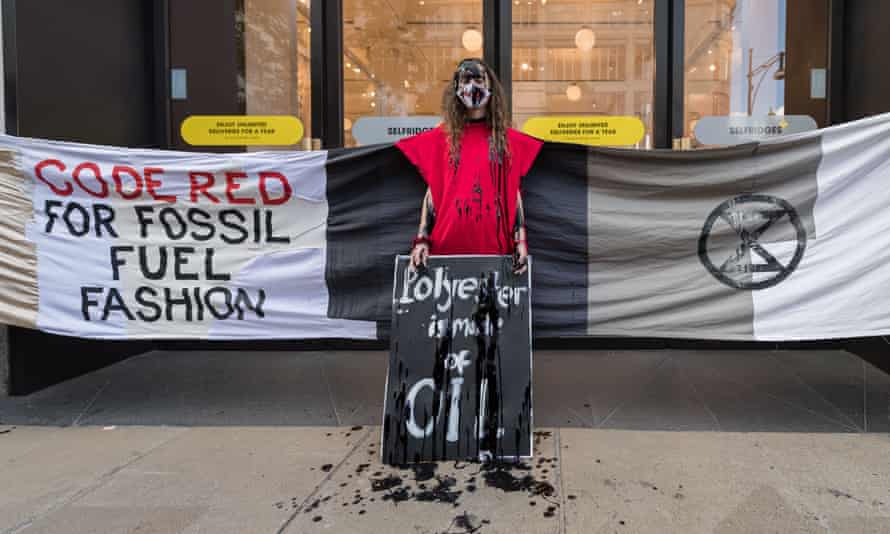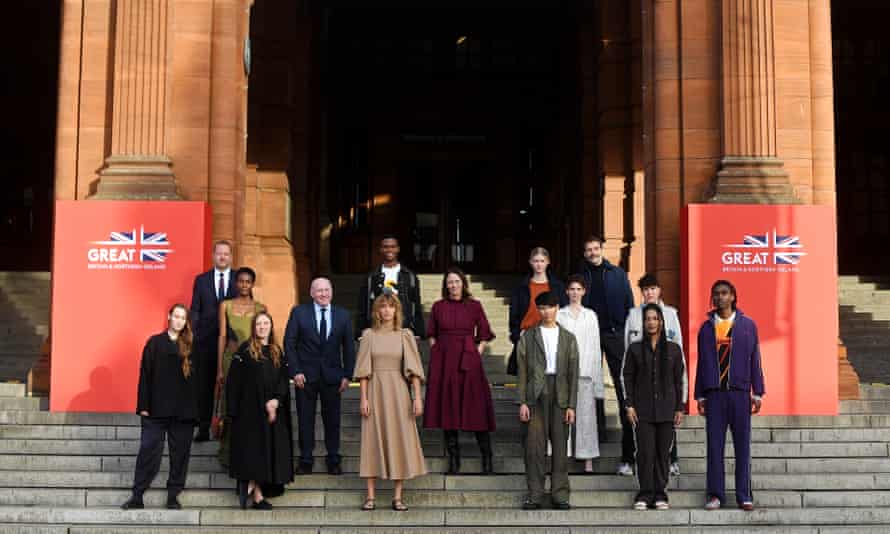Shared from Fashion | The Guardian
At the Cop26 conference, high-profile British brands including Stella McCartney, Burberry and Mulberry presented their visions for an ethical, sustainable industry. Now, there is an increasing demand for all fashion companies to make legally binding commitments to address the impact their supply chains have on the environment. While hundreds of companies – including Gucci-owner Kering, H&M and Inditex, which owns Zara – have signed up to the UN’s Fashion Industry Charter for Climate Action, which sets science-based targets in line with the Paris agreement, there is no obligation to take part, nor a legal mandate to hold brands to account.
Leading industry figures say that if fashion brands are to have any chance of having a meaningful impact on the climate crisis, legislation is needed.
As recently as 2019, the UK government rejected all suggestions – including a ban on incinerating or landfilling unsold stock that can be reused or recycled, and mandatory environmental targets for fashion retailers with a turnover above £36m – made in The Environmental Audit Committee’s report Fixing Fashion: Clothing Consumption and Sustainability.
Well known for her ethical-fashion campaigning, McCartney, who staged her Future of Fashion exhibition at the conference, tells the Guardian that the lack of mandate is the reason “why brands have been getting away with murder and we are in the critical state we are in”. Incentives need to be introduced for the industry to clean up its act, she says. “The issue lies with the fact that we have no way of measuring our harm as a collective. If we were to have a uniform way … then brands would be forced to disclose their current [practices] and make informed changes to their supply chain.”
The fashion industry is currently the third largest manufacturer in the world, with clothing and footwear estimated to be responsible for 8% of global greenhouse gas emissions. At the conference this month, a trade policy request submitted by the Textile Exchange highlighted that global fibre production has nearly doubled this century alone, reports Forbes, going from 58m tonnes in 2000 to 109m tonnes in 2020.
Despite the UNFCCC Fashion Charter for Climate Action also proposing new commitments (including achieving net-zero emissions by 2050 and the sourcing of environmentally friendly raw materials by 2030) at the Glasgow event, Liv Simpliciano, policy and research manager at the Fashion Revolution campaigning organisation, says things need to speed up and more pressing questions need to be addressed.
“While there has been positive progress, it is still far too slow,” she says. “What was glaringly missing from the conversation was the question of growth – both in terms of financial growth and production volumes. With an average growth of 3-4% a year, the fashion industry must decouple financial growth from emissions reduction. There is [also] an enormous lack of visibility further down the value chain. This is where human rights and environmental abuse thrives, and where we need more stringent reduction commitments most.”
To aid this, Simpliciano says brands need to stop relying on second-hand data to estimate emissions and collect their own to get the hard facts. They should be forced to disclose their findings, and incentivised by governments to track data across the supply chain to reduce their overall impact. Fashion Revolution’s research shows that “just 17% of brands disclose their annual carbon footprint at raw material”.
Dr Antoinette Fionda-Douglas from the collective Generation of Waste says businesses are still clinging to such “extractive and exploitative business model[s] for as long as they can to make as much profit as they can, refusing to accept that transformative and systemic change is required if fashion is ever to be truly sustainable”.
Yet Simpliciano points out it makes good business sense to produce better clothes in smaller quantities. “According to the OR Foundation, brands overproduce their SKUs by 20-30%. Some annually accrue billions of items that go unsold due to failures in demand forecasting, so there is a business case for producing less, producing smarter and producing better.”
Further addressing the issue of degrowth, she says policy, industry and cultural change need to happen simultaneously. “We cannot exactly tell fashion brands to produce less, but we can encourage them to slow down, and we know that one way to do that is through consumer demand, or legislation and financial incentives.” She cites increased taxes for the culprits as one solution.
“Overall, what we should be talking about more in the industry is ‘post-growth’,” she adds. “This means moving beyond just producing less, and reaching a point where the idea of success is not linked with the endless pursuit of growth and monetary reward [but] where we can really start to value people over growth and profit.”

In order to highlight the need for brands to take responsibility, Generation of Waste staged a huge installation in the high-profile blue zone of the conference. It showed that while post-consumer waste accounts for 92 million tonnes of textile waste generated globally per year, 57 million tonnes of textile waste is generated pre-consumer. This is through a mixture of design, production and distribution (with the latter responsible for filling the equivalent volume of London’s O2 Centre 19 times annually).
“Too often, solutions proposed by governments and industry place blame and responsibility for waste on to individual consumers or citizens,” says Fionda-Douglas. “It’s easier for big brands to push the responsibility while they go about ‘business as usual’.”
Focusing on net zero alone won’t create the change that’s needed, she argues: “As fashion is so interconnected with other sectors such as agriculture and transportation. Any new legislation needs to be holistic so it can create positive ripple effects across the industry and affected communities.”
To make tangible change quickly, Simpliciano says that brands should be focusing on raw materials, “given that half the total greenhouse gas emissions, as well as over 90% of biodiversity loss and water stress, occur due to the extraction and transformation of resources”.
Caroline Rush, CEO of the British Fashion Council (BFC) which staged its Great Fashion for Climate Action showcase at Cop26, tells the Guardian: “We need to slow down the pace of the industry as a whole and invest in innovation to fast-track the move to a circular economy.” Rush says that “brands and governments can develop new techniques, onshore manufacturing and reskill workers, extending the life of garments and fibres by reintroducing old materials into the fashion economy, and bringing an end to the linear lifecycle currently associated with the industry.”
During the two-week Cop26 event, Burberry released an update on how it intends to address its materials at source. Working with the Sustainable Fibre Alliance, its new biodiversity strategy promises, among other things, to ensure that all of its key materials – such as leather, cotton and wool – are 100% traceable by 2025. “[These are] used most widely across our collections and contribute to our greatest impacts,” Pam Batty, vice-president of corporate responsibility, says. The brand is also “developing our approach to sourcing our materials from regenerative agriculture systems, which will work with farmers to adopt low-carbon practices for these key materials”.
In order for all brands to make sustainable practices scalable, investment is needed, says Fionda-Douglas. “There are incredible fashion organisations around the world who genuinely care about their contribution to a sustainable future for fashion, but there is not enough resource or investment for these solutions to scale their impact in a sustainable way.”
Ultimately, says Simpliciano, “we need to see willingness from our legislators to take bold and unpopular action now”.
Images and Article from Fashion | The Guardian

